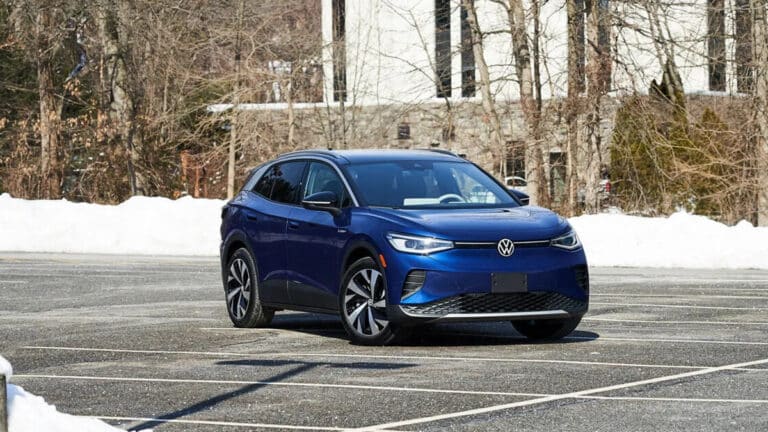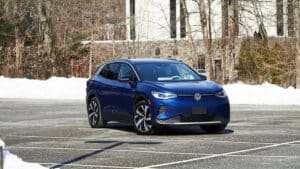The electric vehicle sector is riddled with high-performance vehicles that use speed to attract automobile buyers to a future powered by ions rather than dead dinosaurs. The 2021 Volkswagen ID.4 electric car aims to entice drivers to the quiet hum of driving an EV in its own attractive but understated style, but instead of employing amazing zero to 60 speeds, Volkswagen is instead targeting the fastest expanding market category in the care sector, the small SUV / crossover. The ID.4’s spacious interior and smooth ride make it a better fit.
What will you see here?
Release date, pricing, and trim levels
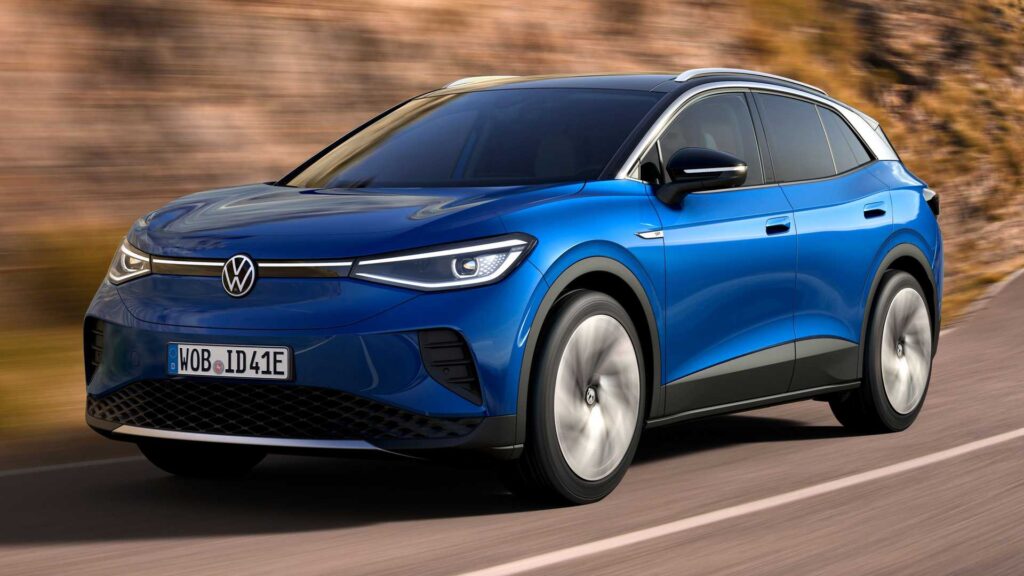
The 2021 Volkswagen ID.4 electric car is currently offered in two trim levels and as a rear-wheel-drive car. The single motor powertrain in the entry-level Pro and limited-edition 1st Edition produces 201 horsepower and 229 pound-feet of torque. The base-level Pro starts at $39,995, has a 260-mile range, and has a 10-inch touchscreen, heated seats, wireless CarPlay and Android Auto, and the vehicle’s advanced driver assistance capabilities.
The 1st Edition adds unique badging, 20″ alloy wheels, premium LED lighting, and a glass roof to the list for $43,995. The all-wheel-drive (AWD) models in two trim levels, the Pro and Pro S. Both cars are capable of producing 295 horsepower. The AWD Pro begins at $43,675 and has the same interiors and 10-inch touchscreen as the rear-wheel-drive model. The Pro S begins at $48,175 and comes with 20-inch alloy wheels if you choose the Gradient package. The cars’ ranges are 249 and 240 miles, respectively. The AWD ID.4 variants are on sale now, but will not be delivered till the fourth quarter of 2021.
All ID.4 models have a shipping price of $1,195 and are all eligible for the federal tax credit of $7,500. The ID.4 has a competitive advantage over Tesla and GM’s products because of this qualification. Both automakers’ vehicles are no longer eligible for the government incentive.
Range, battery, and charging: 2021 Volkswagen ID.4
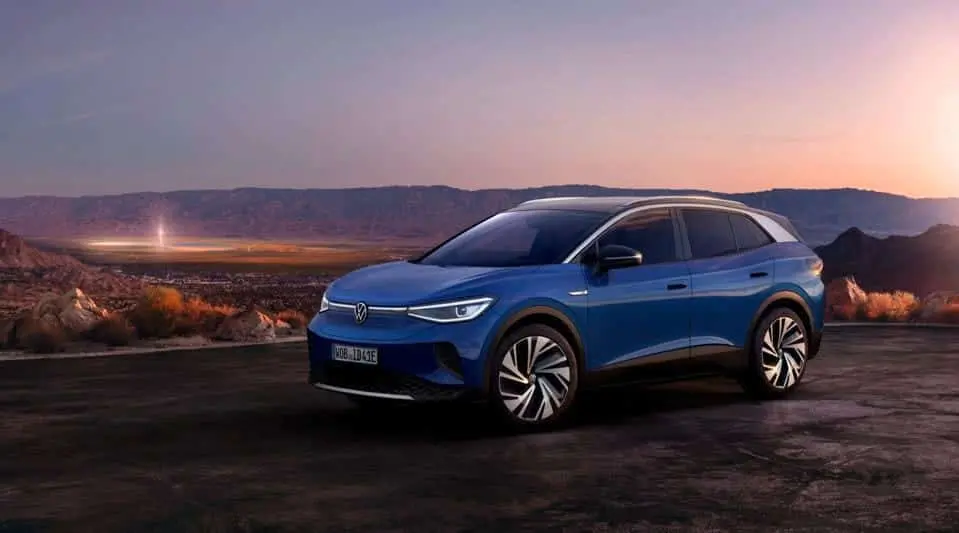
The 1st Edition’s 250-mile range was generally reached or even exceeded in a mixed driving experience with the ID.4 for more than a week, but only by a few miles based on our calculations. Days when the car spent most of its time riding at 70 mph or above saw a decline, as one would anticipate from an EV. All ID.4s come with an 82-kilowatt-hour battery pack, of which 77-kilowatt-hours are available to the vehicle at any time. This difference exists to compensate for battery degradation, which reduces the vehicle’s range. All batteries deteriorate with time; it’s how they function. However, the ID.4 and other EVs that set aside batteries to address this issue are expected to maintain the same range for years to come.
With more stations being installed, charging and locating adapters has become less of a problem. where charging outlets are anticipated to be more prevalent than elsewhere in the country. Nonetheless, the vehicle’s GPS system made finding charging outlets near us while traveling a breeze. The ID.4 is capable of DC-fast charging at up to 125 kW. Volkswagen claims that it can charge the battery from 5% to 80% in roughly 38 minutes. All ID.4 vehicles come in three months of free charging at Electrify America stations, thanks to Volkswagen’s ownership of the network. When EVs are charged at home, they already are cheaper to run than gas vehicles; add in free station charging, and some owners may not even charge at home, saving a lot of money.
Interior and cargo space: 2021 Volkswagen ID.4
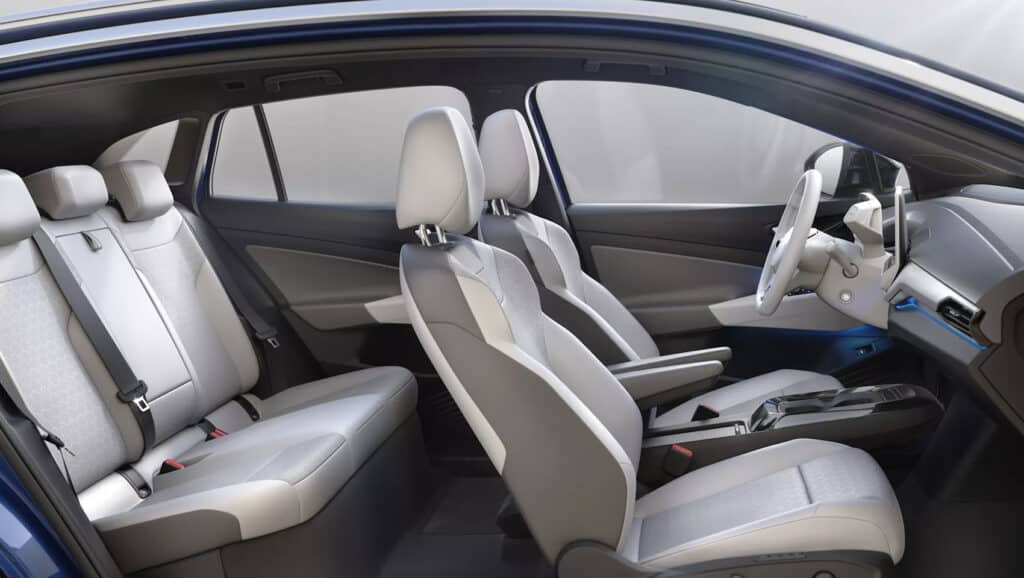
The ID.4’s roomy and airy cabin will at least provide you some inner breathing room if you spend a couple of hours a day in a car. Even the tallest drivers will find the front seats comfortable enough for extended road journeys, with enough head and legroom. The rear seats are a little tight for tall travelers, but three mature adults could fit in the back. With 30.3 cubic feet of cargo room behind the second row, there is plenty of room. With the back seats folded down, the cargo area more so than doubles to 64.2 cubic feet of space for those who need it. Enough for a major Costco run.
The unit featured a fixed glass roof with a shade that could be used to block off the sun’s beams. We’ve driven cars with glass roofs that don’t have a sunshade, and while almost all of the time it’s great, there are times when the glare and heat are bothersome. The shade is a wonderful addition to the collection.
Tech and safety features

The 2021 Volkswagen ID.4 electric car builds on the history of electric vehicles offering tech-heavy features with a dashboard that borrows certain design elements from the Apple Store. Wireless smartphone hookups and keyless entry are standard. In addition, the ID.4 turns on when the user sits down, just as the Polestar 2 and Tesla vehicles. Fortunately, the butt-powered starting technology is reinforced by an actual on/off button for those instances. When the car must remain on when the driver is not in the driver’s seat.
The 5.3-inch ID Cockpit dash cluster is mounted to the steering column behind the wheel. The digital display avoids the recent tendency of adding more and more data underneath the windshield, instead of sharing only the most important data such as speed, battery level, navigation, or driver assistance status.
The system has all of the anticipated settings and status information in a recognizable grid structure, as well as a customized home screen that shows various pieces of information at once, such as media, navigation, and phone. The problem isn’t with the features, but with the system’s latency when in use. In several situations. We would have to tap objects numerous times before making a decision, and sliding between displays took several tries until I got it right.
Despite its latency, the Volkswagen ID Software navigation system provides the required set of functionality for an electric vehicle. The latest version of Volkswagen’s infotainment system debuted in Europe’s smaller ID.3 and was later tweaked for use in the United States in the ID.4. The software in Volkswagen’s new electric vehicles has had some initial problems.
The drive:

After more than a week’s miles and miles behind the wheel of the ID.4, it’s reasonable to conclude that Volkswagen has created a viable alternative to the profusion of gas-powered compact SUVs on the market. While the rear-wheel-drive system appears to lend itself to fast driving, the 201 horsepower 1st Edition. Even at high speeds, the interior was quieter than gas competitors, and the driver and passengers had a nice experience.
The vehicle’s low center of gravity gave it a little sporty feel on twisty backroads that hadn’t seen a construction team in maybe a decade. But only in a minor way. The heft of the battery pack behind the passenger compartment kept the body roll in control. But still not enough to give you the sensation of driving a Volkswagen Golf GTI. Unlike the Mach-E and Model Y, the 1st Edition ID.4 will not dazzle you with its cornering abilities.
On the highway and surface streets, light and moderate bumps were comfortably taken by the 2021 Volkswagen ID.4 electric car. But deeper ruts in the road mixed with a bend showed the suspension’s limits. While technically an SUV, off-roading should be limited to well-maintained dirt roads with modest bumps, holes, and ruts, as with other cars in this class.
Navigation and driver assistance features:
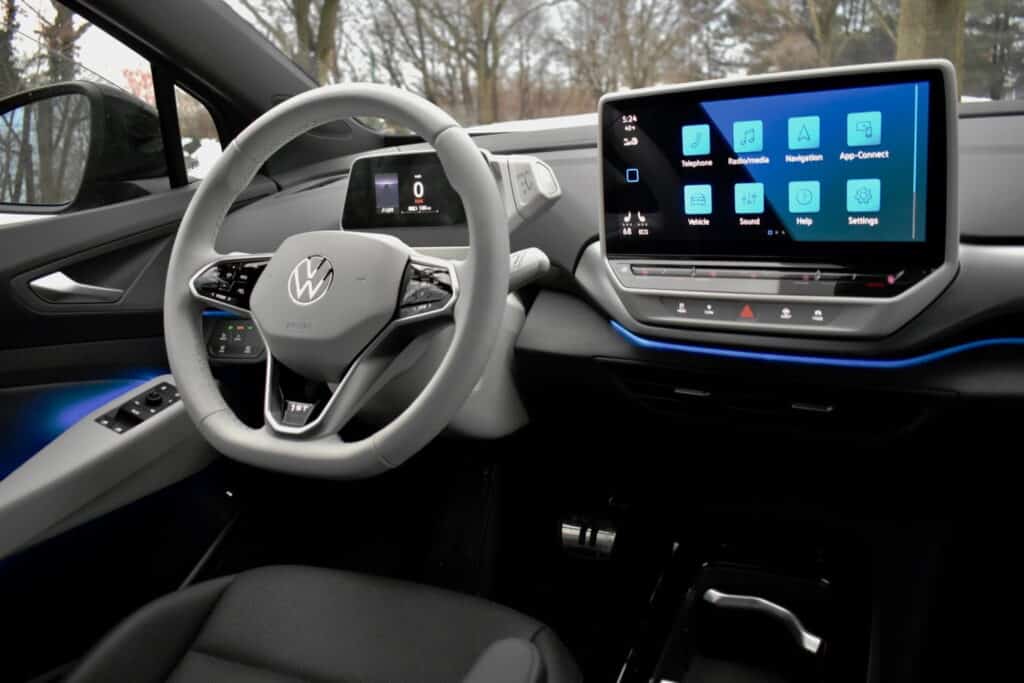
The navigation on the ID.4 takes advantage of the vehicle’s voice assistant. You are able to establish locations without having to take our hands off the wheel. Both the central infotainment display and the ID Cockpit dash cluster include turn-by-turn instructions. The dash’s simple arrow system worked well. The ID Light also provided some assistance by blinking on either the left or right side of the car as a direction indicator when we approached a junction or interchange.
Volkswagen’s intelligence, Adaptive cruise control, and lane-keep assist are among the driver assistance systems that come standard on the Drive. These functions are normally employed in highway traffic, and fortunately for us, we were trapped in a heavy jam. Which required us to use the system for many hours.
There were no surprises when tracking the car in front of us, and the 2021 Volkswagen ID.4 electric car slowed down correctly during cut-ins. When a slow-moving car shifted to a different lane, the ID.4 moved somewhat faster than we would have. But not enough to obstruct traffic or irritate the drivers behind us. We never had the impression that the car was approaching a stopped vehicle too soon before applying the brakes. This is a common occurrence when a vehicle with adaptive cruise control confronts stop-and-go traffic.
Conclusion
Volkswagen hasn’t created a car that will wow us. Rather, it’s intended for a family or person who requires a compact SUV for errands, commuting, or just getting around town. It’s cozy and spacious, with enough room for a family or a group of friends and their belongings. It delivers all of this in a package that isn’t very interesting, but it’s competent and well-built, with enough range to handle 95% of your needs. Not every electric vehicle will set a new speed record; some are designed for everyday use, and the ID.4 is one of them.
Read more
- Upgrade to the best electric cars in 2024: Change with the changing times!
- Navigation on iPhone and iPad-Everything you need to know!
- Finding your car with Siri and the Maps app on iPhone!
- Customize Maps with Map settings on your iPhone and iPad!
- Connect iPhone to a car with carPlay, Bluetooth and USB!

